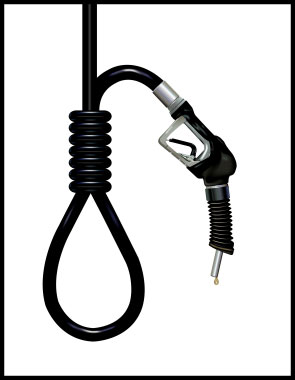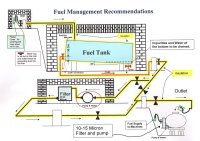

Dear Al Shirawi Enterprises (ASE) Customer,
For many, oil is just oil, and as long as it says 15W40 on the can it’s OK. Or is it? In this post I will also teach you about correct oil filtration, storage and how you can be forewarned of potential engine failure through a simple oil analysis.
The 15W40 on a can of oil is simply a way of showing the viscosity or thickness of the oil at specific temperatures. What is more important are the letters following that: API C. The API stands for the American Petroleum Institute and the letters after that indicates if the oil is for petrol or diesel engines, and, which quality level it meets.
In 1998, we got the first emission regulations for diesel engines and that changed the requirements for the oil. In order to reduce emissions, the fuel pressure is up, temperature is up and a large portion of all the bad stuff that used to go out through the exhaust now stays in the oil.
The first oil type to be launched was the CH-4. And if your engine was made in 1998 or later, this is the absolute minimum level you should use.
One of the biggest differences with the older oils is that this quality can keep soot in soluble condition instead of clogging up lubrication galleries.
The oil is also made to do so much more than just lubricate. It should cool components, it should ensure it doesn’t foam, it should be thick enough to stay on the lubricated surfaces and yet be thin enough to enter where it should.
In addition, it needs to handle acidity brought in through the fuel. For this we have two important indicators, TAN (total acid number) and TBN (total base number). TAN is an indication on how much acid you have in the oil and TBN measures how much resistance to fight against acidity the oil still has left.
Once these two lines cross, the oil should be changed. In general it is safe to say that the higher the oil quality (CI, CJ, etc.) the better the oil should be in handling acidity.
Oil filtration
Whenever you run an engine, there is always some degree of mechanical wear. During running-in of an engine, it is normally higher, and then goes down and, towards the end of the mechanical life, the wear goes up again. How fast this happens is something that can be controlled up to a certain point by:
- What oil quality you have?
- What fuel quality is used?
- What type of filter is used?
- How you manage your air filtration?
Some studies indicate that each grain of wear-metal that ends up in the oil can generate up to seven new grains unless they are filtered away.
Genuine engine oil filters are required if you want to get the maximum out of your engine. Cutting costs on filters will lead to higher costs further down the road.
Oil storage
Oil is not a product that can be stored forever, but with some simple tips you can extend its shelf life.
- Always store oil drums under shade and not in direct sunlight.
- Oil drums should be stored horizontally.
- In order to avoid condensation inside the oil, position the two caps of the drum in “quarter to three” position. (In other words they should be aligned horizontally).
- The area around the caps and the filling area on the vehicle should be kept clean.
Be aware that it is easy to contaminate the oil even before it enters the engine, which could have catastrophic effects on your engine life and vehicle uptime.
Oil analysis
Proper oil analysis is like a blood test that gives vital information about the status of the engine. Samples should be taken on a regular basis and correct information, such as mileage or hours the oil has been in use, should be given to the lab to get the right reading.
Such tests can show if you have a lot of dust in the engine, if the main bearings are worn or if you have a coolant leakage, as well as other problems.
Oil sampling is one of the corner-stones in reducing cost per failure and increasing uptime of your vehicle.
We are experts at doing oil analysis – call us to book an appointment.
![]()
Learn more from these studies on oil filtration and its impacts
- Oil filtration and the bottom line (PDF 569 kb)
- Oil filter advice (PDF 59 kb)
- The real story on filters (PDF 18 kb)
- Clean up your act (PDF 64 kb)
- Why cheap filters cost more (PDF 56 kb)
- Why maintain oil cleanliness (PDF 45 kb)
Next Week
I will show you how to get the most out of your tyres and tell you about the importance of wheel and axle alignment.
More Time on the Road
with Al Shirawi Enterprises (ASE)Lars Möller, General Manager, After Sales











